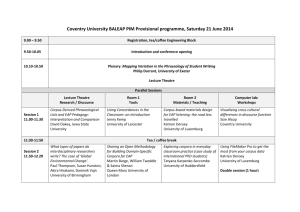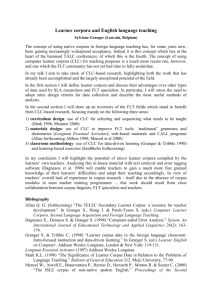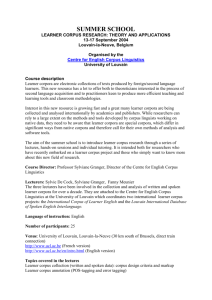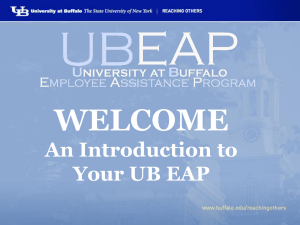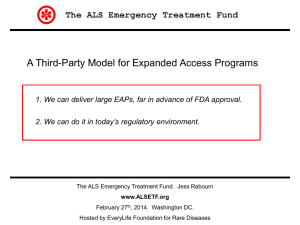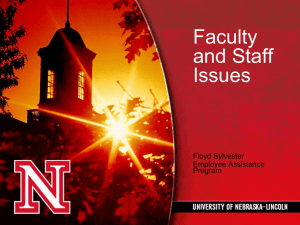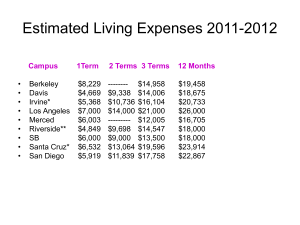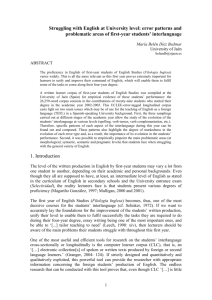Lexico-grammatical Patterns of EAP verbs: how do learners cope
advertisement
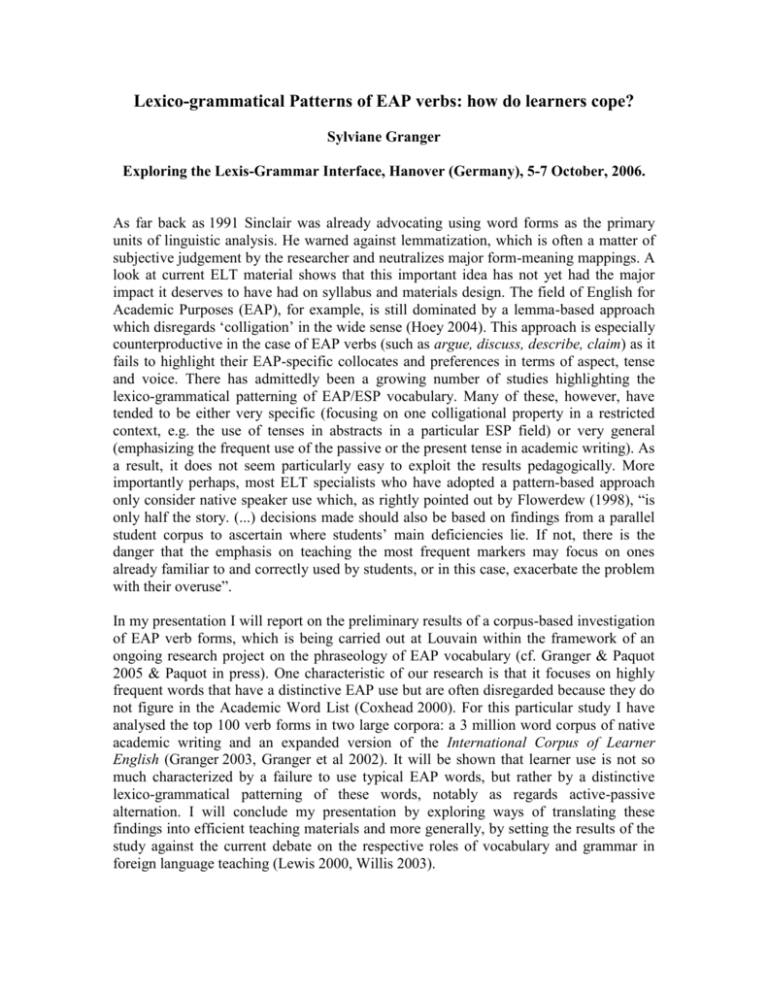
Lexico-grammatical Patterns of EAP verbs: how do learners cope? Sylviane Granger Exploring the Lexis-Grammar Interface, Hanover (Germany), 5-7 October, 2006. As far back as 1991 Sinclair was already advocating using word forms as the primary units of linguistic analysis. He warned against lemmatization, which is often a matter of subjective judgement by the researcher and neutralizes major form-meaning mappings. A look at current ELT material shows that this important idea has not yet had the major impact it deserves to have had on syllabus and materials design. The field of English for Academic Purposes (EAP), for example, is still dominated by a lemma-based approach which disregards ‘colligation’ in the wide sense (Hoey 2004). This approach is especially counterproductive in the case of EAP verbs (such as argue, discuss, describe, claim) as it fails to highlight their EAP-specific collocates and preferences in terms of aspect, tense and voice. There has admittedly been a growing number of studies highlighting the lexico-grammatical patterning of EAP/ESP vocabulary. Many of these, however, have tended to be either very specific (focusing on one colligational property in a restricted context, e.g. the use of tenses in abstracts in a particular ESP field) or very general (emphasizing the frequent use of the passive or the present tense in academic writing). As a result, it does not seem particularly easy to exploit the results pedagogically. More importantly perhaps, most ELT specialists who have adopted a pattern-based approach only consider native speaker use which, as rightly pointed out by Flowerdew (1998), “is only half the story. (...) decisions made should also be based on findings from a parallel student corpus to ascertain where students’ main deficiencies lie. If not, there is the danger that the emphasis on teaching the most frequent markers may focus on ones already familiar to and correctly used by students, or in this case, exacerbate the problem with their overuse”. In my presentation I will report on the preliminary results of a corpus-based investigation of EAP verb forms, which is being carried out at Louvain within the framework of an ongoing research project on the phraseology of EAP vocabulary (cf. Granger & Paquot 2005 & Paquot in press). One characteristic of our research is that it focuses on highly frequent words that have a distinctive EAP use but are often disregarded because they do not figure in the Academic Word List (Coxhead 2000). For this particular study I have analysed the top 100 verb forms in two large corpora: a 3 million word corpus of native academic writing and an expanded version of the International Corpus of Learner English (Granger 2003, Granger et al 2002). It will be shown that learner use is not so much characterized by a failure to use typical EAP words, but rather by a distinctive lexico-grammatical patterning of these words, notably as regards active-passive alternation. I will conclude my presentation by exploring ways of translating these findings into efficient teaching materials and more generally, by setting the results of the study against the current debate on the respective roles of vocabulary and grammar in foreign language teaching (Lewis 2000, Willis 2003). References Coxhead, A. 2000 A new Academic Word List. TESOL Quarterly 34, 2, 213-238. Flowerdew, L. 1998. Integrating expert and interlanguage computer corpora findings on causality: Discoveries for teachers and students. ESP Journal 17/4: 329-345. Granger, S. 2003. The International Corpus of Learner English: A New Resource for Foreign Language Learning and Teaching and Second Language Acquisition Research. TESOL Quarterly 37, 538-546. Granger, S., Dagneaux, E. & Meunier, F. 2002. International Corpus of Learner English. Version 1.1. Handbook and CD-ROM. Presse universitaires de Louvain: Louvain-laNeuve. Granger, S. & Paquot, M. 2005. The phraseology of EFL academic writing: Methodological issues and research findings. Paper presented at ICAME 26 (International Computer Archive of Modern and Medieval English) - AAACL 6 (American Association of Applied Corpus Linguistics), University of Michigan, 12-15 May 2005. Hoey, M. 2004. The textual priming of lexis. In Aston G., Bernardini S. & Stewart D. (eds) Corpora and language learners. Amsterdam/ Philadelphia: John Benjamins, 21-41. Lewis, M. (ed.) 2000. Teaching Collocation. Further Developments in the Lexical Approach. Boston : Thomson Heinle. Paquot, M. In press. Towards a productively-oriented academic word list. In Walinski J., K. Kredens & S. Gozdz-Roszkowski (eds) PALC 2005 Proceedings. Frankfurt am Main: Peter Lang. Sinclair, J. 1991. Corpus, Concordance, Collocation. Oxford : Oxford University Press. Willis, D. 2003. Rules, Patterns and Words. Grammar and Lexis in English Language Teaching. Cambridge : Cambridge University Press.
